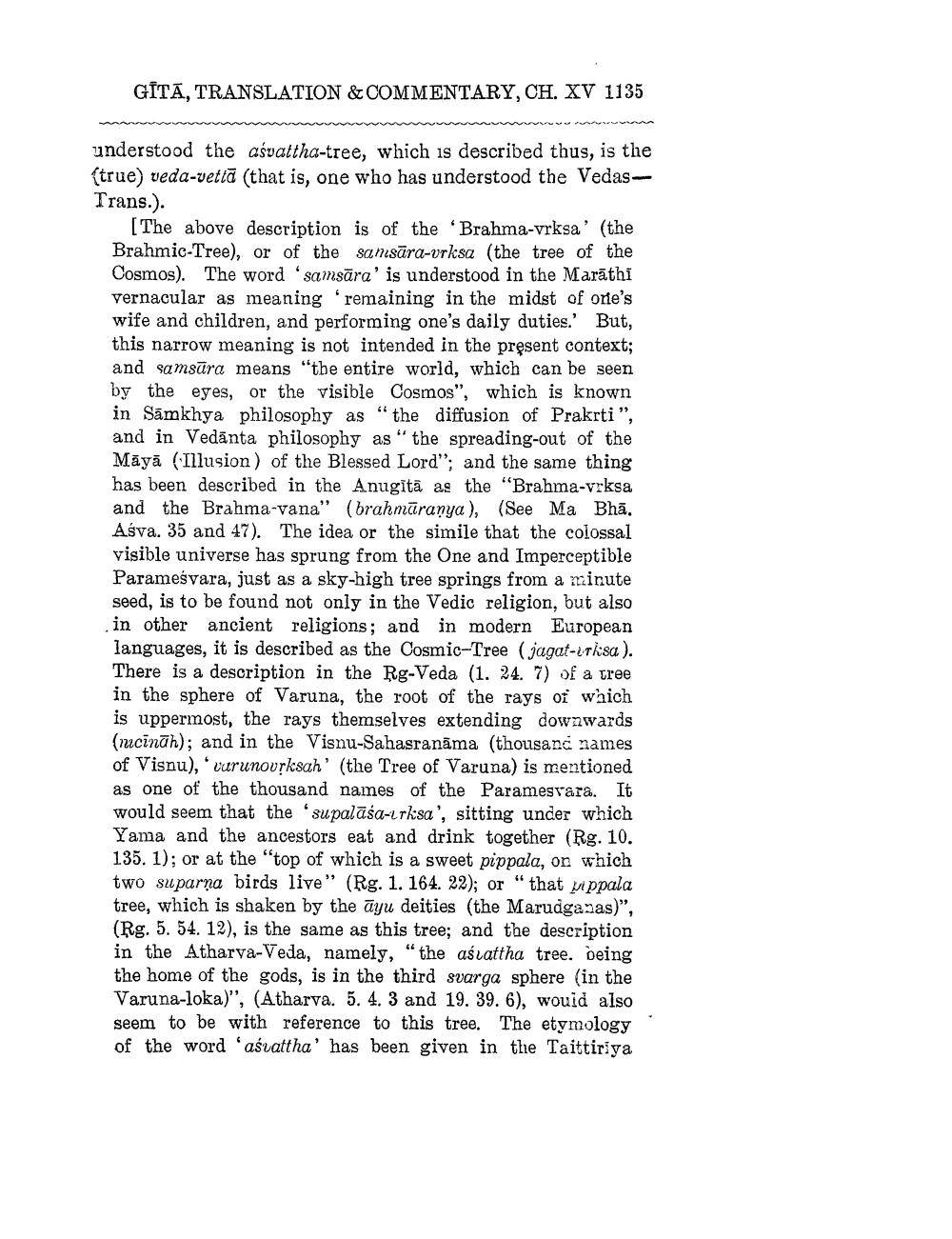________________
GITĀ, TRANSLATION & COMMENTARY, CH. XV 1135
understood the asvattha-tree, which is described thus, is the (true) veda-vetta (that is, one who has understood the VedasTrans.).
[The above description is of the 'Brahma-vrksa' (the Brahmic-Tree), or of the samsāra-urksa (the tree of the Cosmos). The word 'samsāra' is understood in the Marāthi vernacular as meaning "remaining in the midst of one's wife and children, and performing one's daily duties.' But, this narrow meaning is not intended in the present context; and samsūra means "the entire world, which can be seen by the eyes, or the visible Cosmos", which is known in Samkhya philosophy as "the diffusion of Prakrti", and in Vedānta philosophy as "the spreading-out of the Māyā (Illusion) of the Blessed Lord"; and the same thing has been described in the Anugitā as the "Brahma-vrksa and the Brahma-vana" (brahmāranya), (See Ma Bhā. Aśva. 35 and 47). The idea or the simile that the colossal visible universe has sprung from the One and Imperceptible Parameśvara, just as a sky-high tree springs from a minute seed, is to be found not only in the Vedic religion, but also in other ancient religions; and in modern European languages, it is described as the Cosmic-Tree (jagat-irksa). There is a description in the Rg-Veda (1. 24. 7) of a tree in the sphere of Varuna, the root of the rays of which is uppermost, the rays themselves extending downwards (rucināh); and in the Visnu-Sahasranāma (thousand names of Visnu), vurunovrksah' (the Tree of Varuna) is mentioned as one of the thousand names of the Paramesvara. It would seem that the 'supalāša-erksa', sitting under which Yama and the ancestors eat and drink together (Rg. 10. 135.1); or at the "top of which is a sweet pippala, on which two suparna birds live" (Rg. 1. 164. 22); or " that pippala tree, which is shaken by the āyu deities (the Marudganas)", (Rg. 5. 54. 12), is the same as this tree; and the description in the Atharva-Veda, namely, "the aślattha tree. being the home of the gods, is in the third svarga sphere (in the Varuna-loka)", (Atharva. 5. 4.3 and 19. 39. 6), wouid also seem to be with reference to this tree. The etymology of the word 'aśrattha' has been given in the Taittiriya




